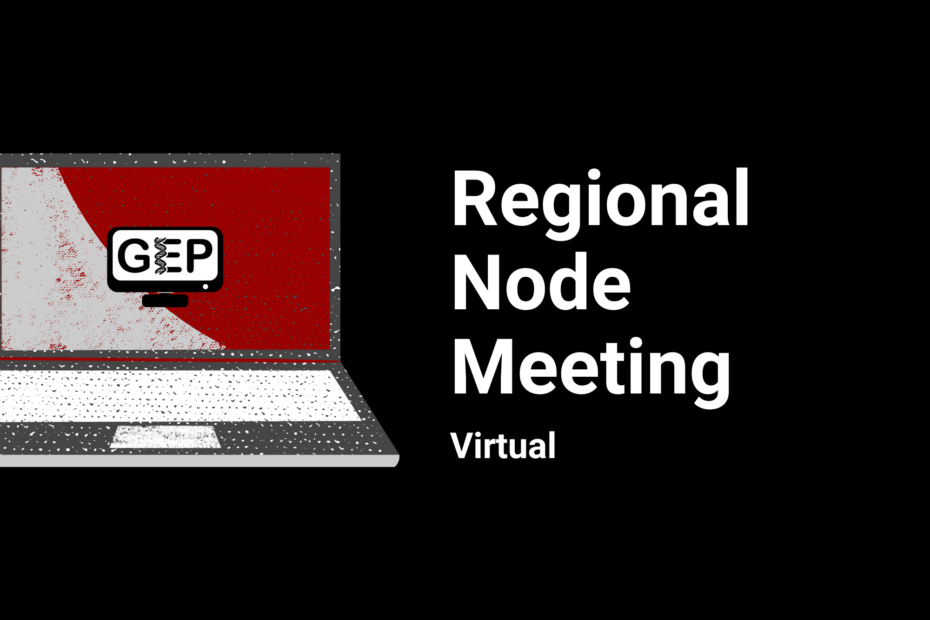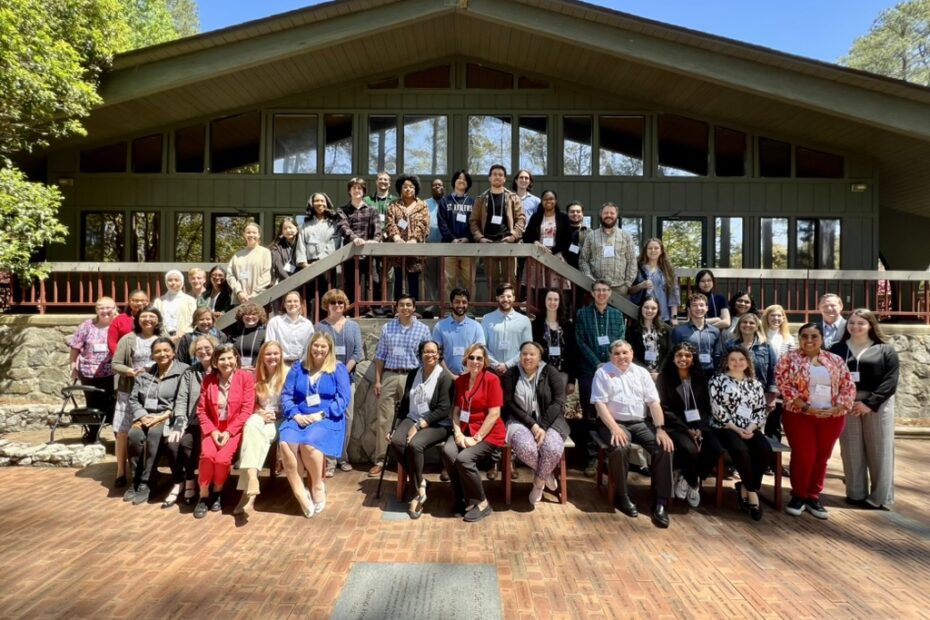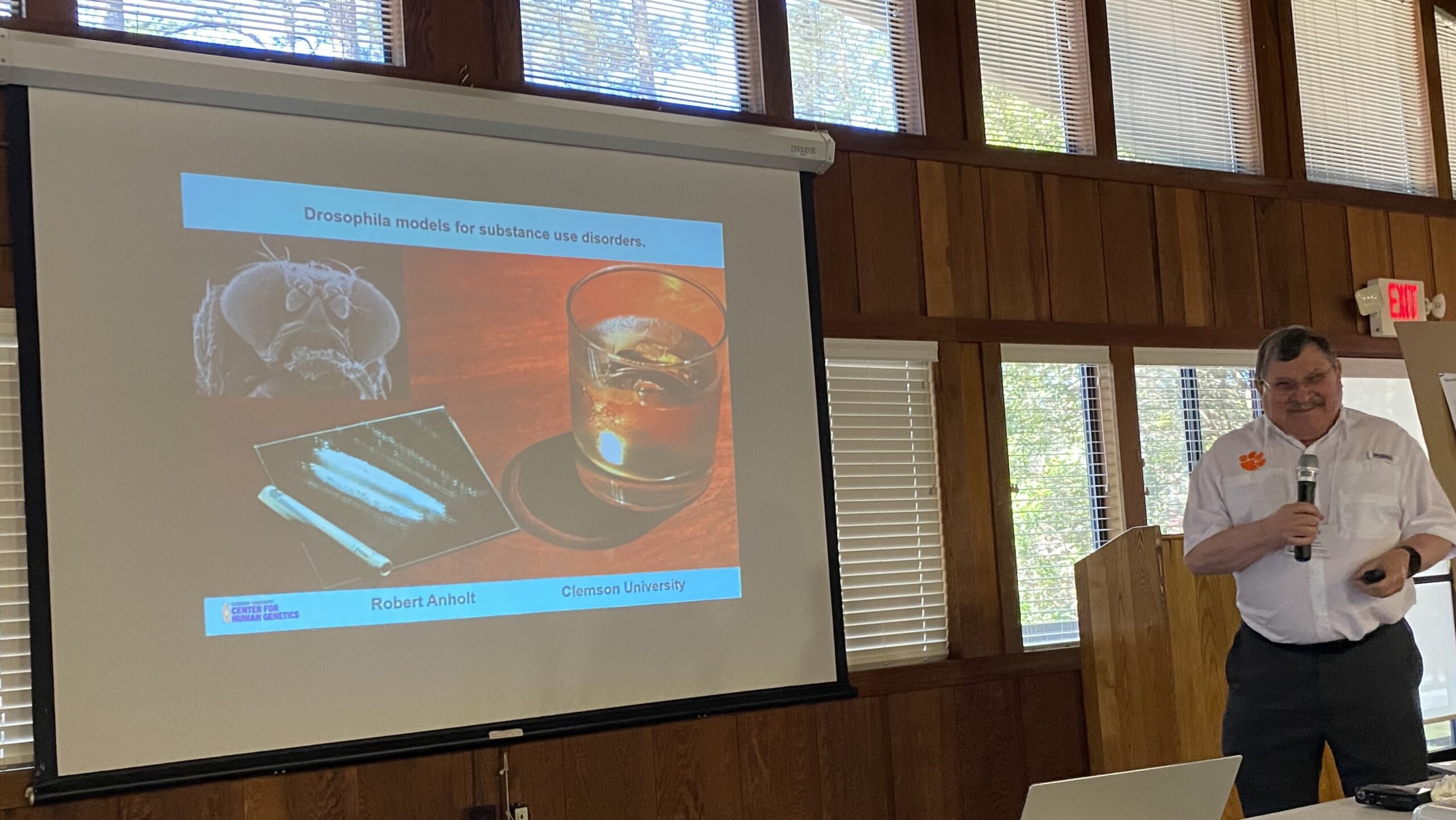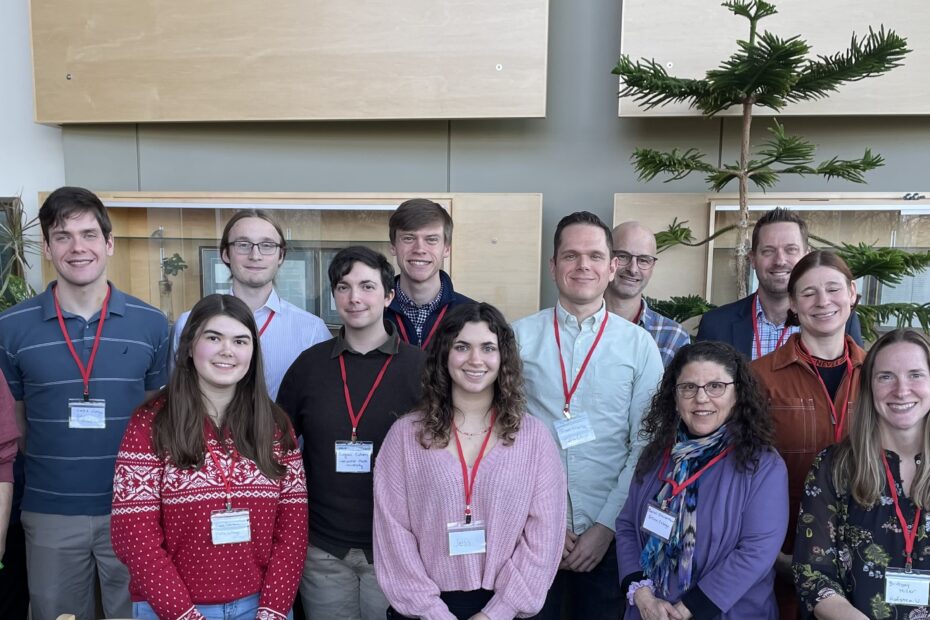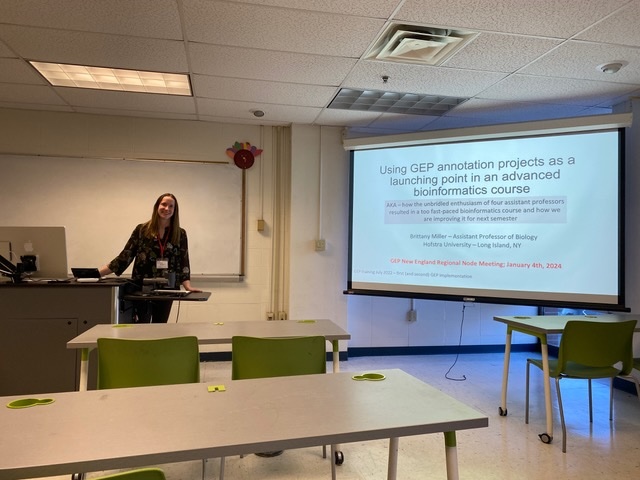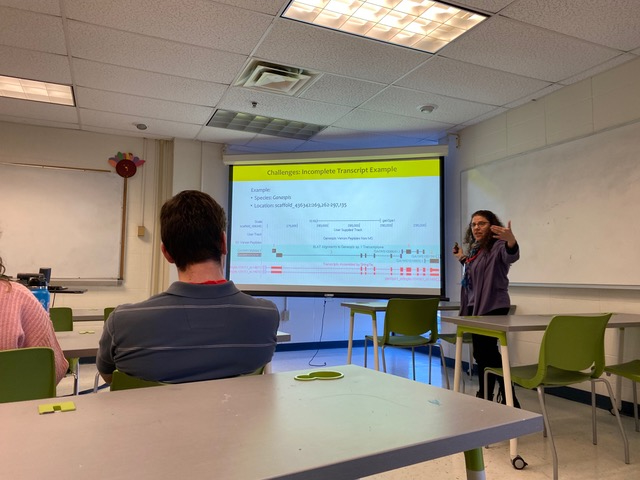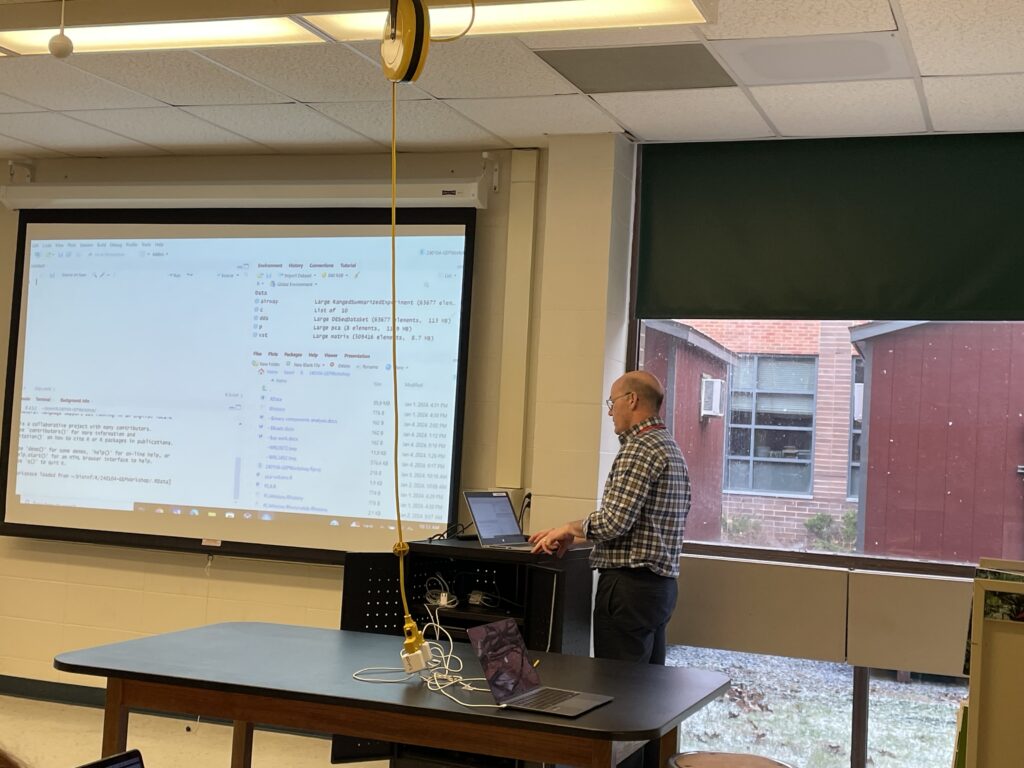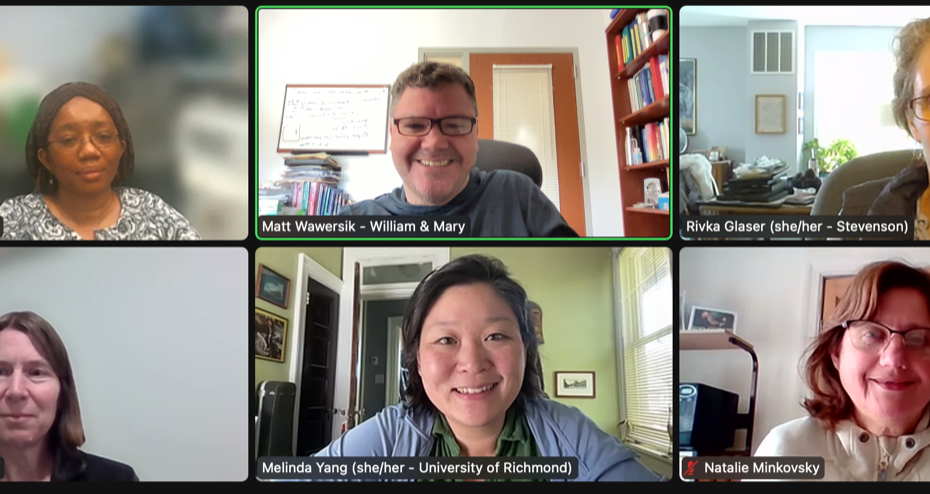The location of the symposium, in the western part of South Carolina, provided the added benefit of allowing us to invite colleagues from the Atlanta area in the Southeast Regional Node. This made for a dynamic, vibrant GEP community gathering.
Many thanks are in order. The first and biggest to our own Sally Elgin, without whose help the event would not have been possible. Trudy and Robert, as Sally refers to them, are her friends and colleagues and she reached out to them early, in July 2023. It turns out that they are very efficient and quickly organized a meeting with Sally, Marisol, Dr. David Clayton, and Associate Dean, Dr. Calvin Williams, to see if there would be any interest or capacity for this type of event at Clemson. Sally prepared some slides to introduce the GEP to our Clemson partners and Marisol explained the idea for the event—provide GEP students with the opportunity to visit a cutting-edge research center, meet with professionals, listen to research talks, hear about careers in genomics, and have student presentations. The meeting went well, Drs. Clayton and Williams were on board, and they even saw opportunities for their own students and faculty to participate. Many months and meetings later this came to fruition. Our most heartfelt thanks, Sally. And thanks to the Clemson University Department of Genetics and Biochemistry and Human Genetics Center faculty and students, in particular to Robert and Trudy. Robert was extraordinarily efficient and helpful along the way. In no-time he had booked the location and paid the deposit, putting us in touch with the Outdoor Lab coordinator. He also suggested the names for panelists and sent emails to the faculty at Clemson so they could recruit students for the event. Also, thanks go to Rooksana “Rooksie” Noorai, Assistant Director of Bioinformatics at Clemson University Genomics and Bioinformatics Facility, who stayed late on a Saturday to give us a tour of the facility.
Thanks, of course, to the members of the Carolinas Node for your efforts in the planning and execution, and especially to Node co-leaders, Marisol Santisteban (UNC Pembroke) and Michele Eller (Southern Wesleyan University). Michele happened to be local and was able to iron out so many kinks and took care of so much stuff in person. Michele is the epitome of efficiency and organization. Thanks also to Indi Bose (Western Carolina University), Jeff French (North Greenville University), Maria Pereira (UNC Pembroke), Scott Tanner (University of South Carolina Upstate), and Vida Mingo (Columbia College) for coming and helping on the ground. And to those who could not make it but still sent their students, like Nicole Velmeshev and Cathy Silver Key (NC Central University) and Christine Richardson (University of North Carolina at Charlotte). And thanks to our Georgian colleagues, Srebrenka Robic (Agnes Scott College), John Stanga (Mercer University), and Pushpa Yadav (Middle Georgia State University) who answered our call and came and brought many student presenters. All those students were amazing helpers putting up and breaking down poster boards and easels in record time.
Our final thanks are to the Regional Node leaders, Mel and Jenny, for their unwavering support and the GEP staff, Sarah and Katie, for taking care of what seemed like thousands of tasks. Katie was recruited to help on the administrative side when Sarah was on maternity leave. Katie also created our beautiful program, provided helpful advice on planning, and joined us in person at the event!
The ability to have the event at an R1 Institution that has a center for Human Genetics and Genomics facilities was a unique treat. Maybe this model of holding Node events at R1 Institutions could be a modality for some Node events that would be cost effective. It is our hope that the symposium was also good for Clemson, in making the school more visible to prospective graduate students. If our Clemson partners were equally happy with the event, it could be a good prototype for encouraging more R1 Universities to host GEP Node events. Additionally, Dr. Clayton expressed interest in learning about the GEP materials and how they might use them in their foundational courses, to set the stage for the students to dive into the deep end of technologies and genetic data analysis. We will be scheduling a meeting soon.
In closing we must quote Srebrenka Robic again, who—with a wide smile across her face—said before leaving: “When are we having the next one?”

